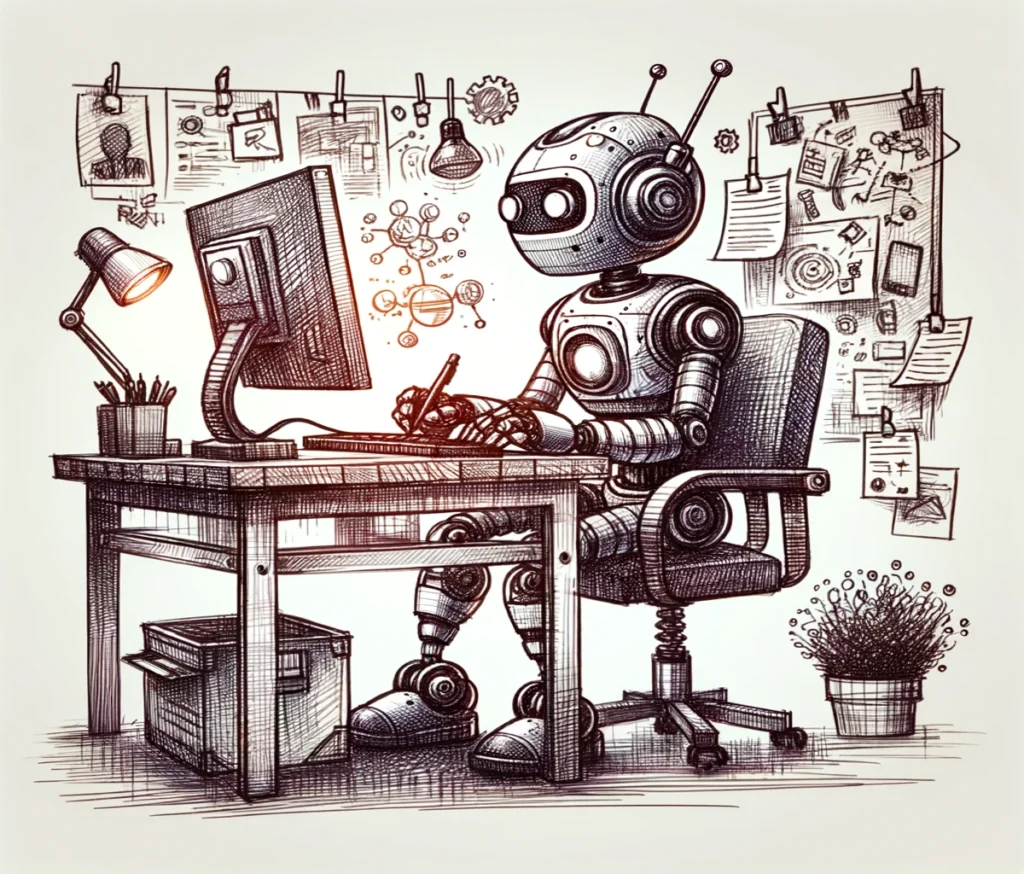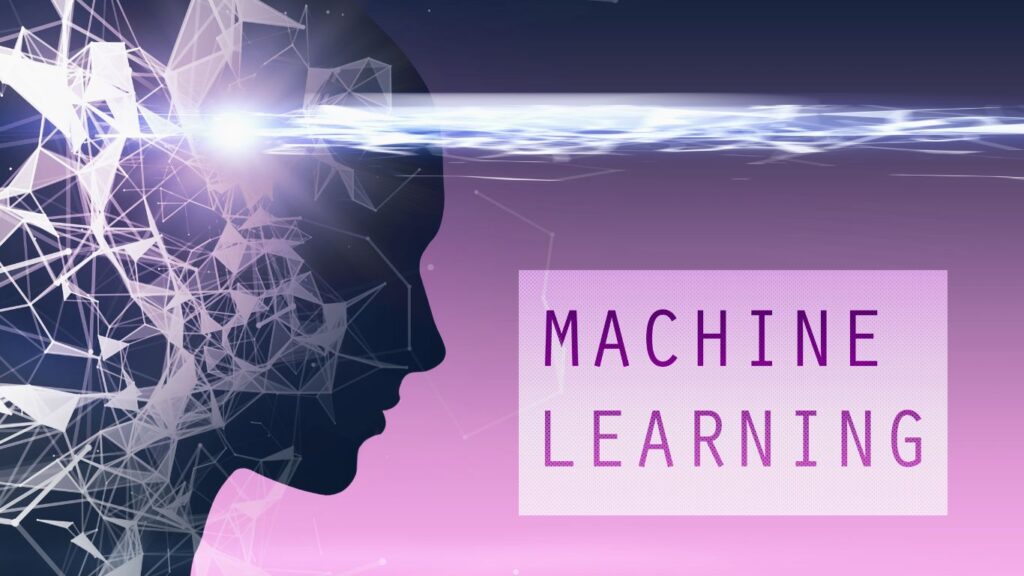Artificial Intelligence (AI) and Machine Learning (ML) are revolutionizing every facet of life and industry, driving efficiency, predicting outcomes, and automating processes like never before.
This article explores the fascinating realms of Artificial Intelligence (AI) and Machine Learning (ML), two related but distinct branches of computer science. We’ll demystify their workings, their real-world applications, and the critical differences between them.
From tech enthusiasts to professionals, this guide provides a concise understanding of these technologies and their transformative potential. Let’s delve into this exciting journey of learning about AI and ML, and how they’re shaping our future.

Artificial Intelligence
Artificial Intelligence, or AI, refers to the general concept of machines or computers being able to perform tasks that typically require human intelligence.
AI systems aim to simulate and mimic human intelligence and behavior, including learning and problem-solving abilities. It is a technology that allows machines to learn from data without being explicitly programmed to do so.
Artificial Intelligence is further subdivided into two categories: Weak AI, also known as Narrow AI, designed to carry out specific tasks, such as Siri, and Strong AI, which possesses the ability to perform any intellectual task that a human being can do.
The ultimate goal of AI is to create intelligent systems that can perform tasks without human intervention, enabling machines to think like a human.
How Does Artificial Intelligence Work?
Artificial Intelligence (AI) works by combining extensive data inputs, powerful processing capabilities, and intelligent algorithms to recognize patterns and derive insights.
By learning from this data, similar to how humans do, AI systems can make decisions, predictions, or perform tasks that typically require human intelligence.
The learning process involves training the AI model using various techniques such as supervised, unsupervised, or reinforcement learning.
Once trained, these systems can apply the learned knowledge to new data. Additionally, AI incorporates feedback mechanisms to continually improve and refine its performance, ensuring enhanced accuracy over time.
Machine Learning

A subset of AI, Machine Learning, or ML, is the technological application that allows a machine to learn from data. Machine learning algorithms enable a computer system to learn from past data, recognize patterns, and make predictions without being explicitly programmed.
The essence of ML lies in its learning models, which include supervised learning, unsupervised learning, and reinforcement learning.
Each of these learning models is equipped with algorithms, such as reinforcement learning algorithms. Which allows the machine to adapt and learn from data without explicit programming.
How Does Machine Learning Work?
The power of machine learning is its ability to automatically learn and improve from experience. This learning is achieved by feeding structured and unstructured data into machine learning algorithms.
These algorithms allow machines to learn from data without being explicitly programmed, hence leading to accurate predictions and decision-making abilities.
Difference Between AI and Machine Learning
When distinguishing between AI and ML, it’s important to note that the primary difference between AI and machine learning lies in their goals and functionalities.
The goal of AI is to mimic human intelligence, enabling it to perform tasks like humans. While the purpose of ML is to learn from data and make predictions.
Both are interconnected realms in the field of computer science. Machine learning is a subset of artificial intelligence, which means that all machine learning equates to AI. But not all AI incorporates machine learning.
The relation between AI and ML can be observed in many everyday applications. For instance, Facebook’s auto friend tagging system uses machine learning models to detect and identify faces.
AI and ML, together, are revolutionizing numerous sectors. Companies use AI and machine learning to automate processes, increase efficiency, and deliver superior customer experiences.
From spam filters in email systems to online recommender systems like Netflix, the use of AI and ML in the world today is vast and expanding.
Need help implementing Artificial Intelligence or Machine Learning in your company? or both? Contact us, we are specialists in Belgium for those developments.
Deep Learning and Neural Networks
Deep Learning, a subset of Machine Learning, employs multi-layered artificial neural networks to emulate the human brain’s decision-making process.
These “deep” neural networks allow machines to process large volumes of data with high accuracy. Contributing significantly to tasks like image recognition and natural language processing.
Artificial Neural Networks, inspired by the biological brain, consist of interconnected neurons that transmit and process information. With an input layer to receive data, hidden layers for learning through weight and bias modifications, and an output layer to present results, these networks form the backbone of deep learning systems, enabling innovative applications across various fields.
Applications of AI and Machine Learning
The application of AI and machine learning is prevalent in many sectors. Businesses employ AI tools and machine learning models to detect patterns and insights that would be impossible for humans to identify manually.
AI strategy is being embraced in healthcare, e-commerce, finance, transportation, and more, driving efficient solutions to complex problems.
Examples of AI application
Artificial Intelligence has permeated various sectors, driving innovation and enhancing efficiency. Here are some prominent examples of AI applications:
- Virtual Assistants: Virtual assistants like Siri, Alexa, and Google Assistant use AI to understand voice commands and respond intelligibly. They use natural language processing and machine learning algorithms to learn user preferences and provide personalized responses.
- Email Communication: AI powers features like spam filters in email clients, sorting out unwanted emails based on learned patterns. Smart replies in Gmail, which suggest short responses to emails, also utilize AI.
- E-commerce: AI is used for personalized recommendations, predicting shopping patterns, and optimizing delivery routes. Companies like Amazon use AI extensively to improve customer experience.
- Banking and Finance: AI helps detect fraudulent transactions, automate customer service through chatbots, and make informed decisions in stock trading.
Examples of Machine Learning application
Machine Learning (ML), a subset of AI, has various applications across numerous sectors due to its ability to learn from data and make accurate predictions. Here are some of the most common applications:
- Customer Service: ML powers chatbots and virtual assistants that can handle various customer inquiries, providing fast and efficient customer service.
- Social Media: ML is used in social media platforms for tasks like automatic friend tagging in photos (Facebook), personalized content curation (Instagram), and trending topic identification (Twitter).
- Natural Language Processing: ML is used in applications like Google Translate, Grammarly, or Siri. Which involve understanding, interpreting, generating, and translating human language.
- Recommendation Systems: Perhaps the most familiar application of ML, recommendation systems are used by companies like Netflix, Amazon, and Spotify. To suggest products, movies, or songs based on user behavior and preferences.
Conclusion
To conclude, Artificial Intelligence and Machine Learning are driving our rapidly evolving digital world. Both fields offer transformative applications across industries, marking a revolutionary shift in how we comprehend and interact with technology.
As these technologies continue to mature, their impact will only expand, emphasizing the necessity for a solid understanding of AI and ML.
Undoubtedly, the future with AI and ML is full of unprecedented possibilities and advancements.
You can also read our previous articles on AI:
- create a unique AI for your SME, it’s possible
- AI for your SME, an unfair competitive advantage
